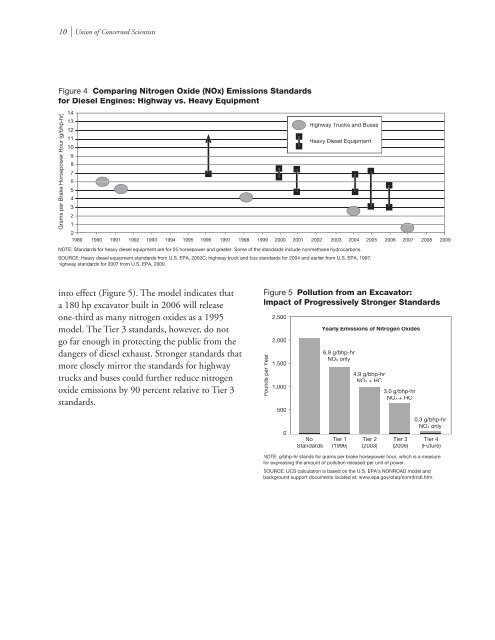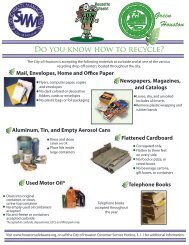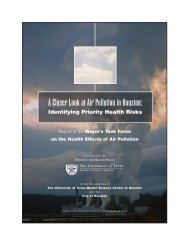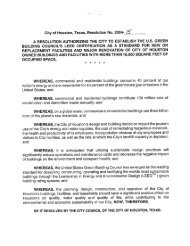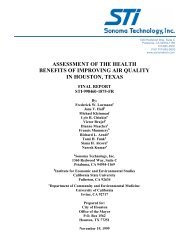Cleaning Up Diesel Pollution - Union of Concerned Scientists
Cleaning Up Diesel Pollution - Union of Concerned Scientists
Cleaning Up Diesel Pollution - Union of Concerned Scientists
- No tags were found...
You also want an ePaper? Increase the reach of your titles
YUMPU automatically turns print PDFs into web optimized ePapers that Google loves.
10 l <strong>Union</strong> <strong>of</strong> <strong>Concerned</strong> <strong>Scientists</strong> 0.3 g/bhp-hrFigure 4 Comparing Nitrogen Oxide (NOx) Emissions Standardsfor <strong>Diesel</strong> Engines: Highway vs. Heavy EquipmentGrams per Brake Horsepower Hour (g/bhp-hr)1413121110987654321Highway Trucks and BusesHeavy <strong>Diesel</strong> Equipment01989 1990 1991 1992 1993 1994 1995 1996 1997 1998 1999 2000 2001 2002 2003 2004 2005 2006 2007 2008 2009NOTE: Standards for heavy diesel equipment are for 25 horsepower and greater. Some <strong>of</strong> the standards include nonmethane hydrocarbons.SOURCE: Heavy diesel equipment standards from U.S. EPA, 2002C; highway truck and bus standards for 2004 and earlier from U.S. EPA, 1997;highway standards for 2007 from U.S. EPA, 2000.into effect (Figure 5). The model indicates thata 180 hp excavator built in 2006 will releaseone-third as many nitrogen oxides as a 1995model. The Tier 3 standards, however, do notgo far enough in protecting the public from thedangers <strong>of</strong> diesel exhaust. Stronger standards thatmore closely mirror the standards for highwaytrucks and buses could further reduce nitrogenoxide emissions by 90 percent relative to Tier 3standards.Figure 5 <strong>Pollution</strong> from an Excavator:Impact <strong>of</strong> Progressively Stronger StandardsPounds per Year2,5002,0001,5001,000500Yearly Emissions <strong>of</strong> Nitrogen Oxides6.9 g/bhp-hrNOx only4.9 g/bhp-hrNOx + HC3.0 g/bhp-hrNOx + HC0NOx onlyNo Tier 1 Tier 2 Tier 3 Tier 4Standards (1996) (2003) (2006) (Future)NOTE: g/bhp-hr stands for grams per brake horsepower hour, which is a measurefor expressing the amount <strong>of</strong> pollution released per unit <strong>of</strong> power.SOURCE: UCS calculation is based on the U.S. EPA’s NONROAD model andbackground support documents located at: www.epa.gov/otaq/nonrdmdl.htm.


